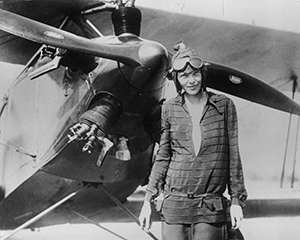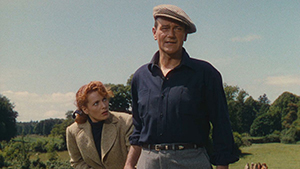On this Day
Published in Issue 3 (May/June 2016), News, Volume 24May
21/1932

Above: Amelia Earhart in front of her biplane, Friendship, in Newfoundland, 14 June 1928. (Getty Images)
Earhart is also remembered for the mysterious nature of her disappearance, and death, in July 1937. On a mission to fly around the world, with her navigator Fred Noonan, she crashed near the Phoenix Islands, a small group of atolls in the middle of the Pacific Ocean. In 1940 the skeleton of a ‘tall white female of northern European ancestry’ was discovered on one of the islands.
02/1916
‘I am to be shot at dawn. I am glad I am getting a soldier’s death. I feared it might be hanging or imprisonment. I have had enough of jail’—Thomas Clarke, in a letter to his wife, on the eve of his execution.
03/1916
Patrick Pearse (36), Tom Clarke (59) and Thomas MacDonagh (38) executed.
Augustine Birrell, Chief Secretary for Ireland since 1907, resigned.
04/1916
Joseph Mary Plunkett (28), Ned Daly (25), Michael O’Hanrahan (39) and Willie Pearse (34) executed.
05/1916
Major John MacBride (47) executed.
05/1966
In Britain the ‘Moors murders’ trial ended with the sentencing of Ian Brady and his accomplice Myra Hindley to terms of life imprisonment.
08/1916
Éamonn Ceannt (34), Michael Mallin (36), Con Colbert (25) and Seán Heuston (25) executed.
09/1916
Thomas Kent (50) executed in Cork.
11/1916
‘It is the first rebellion that ever took place in Ireland where you had the majority on your side. It is the fruit of our [the Irish Parliamentary Party’s] life work … now you are washing out our whole life’s work in a sea of blood …’—John Dillon, Irish Parliamentary Party MP for East Mayo, in a speech condemning the executions of the 1916 insurgents to a hostile House of Commons.
12/1916
James Connolly (47) and Seán MacDiarmada (33) executed.
Prime Minister H.H. Asquith arrived in Ireland (until 18th).
16/1916
Britain and France concluded the secret Sykes–Picot Agreement that was to divide the Arab regions of the Ottoman Empire after the First World War into French and British ‘spheres of influence’.
16/1926
The Fianna Fáil Party was founded by Éamon de Valera.
23/2011
US President Barack Obama made a one-day visit to Ireland during which he visited his ancestral village of Moneygall, Co. Offaly, and addressed a rapturous 50,000-strong crowd in Dublin’s College Green.
31/1916
The two-day Battle of Jutland, the first and only meeting between the German High Seas Fleet and the British Grand Fleet, began.
June
11/1979

Above: John Wayne and Maureen O’Hara in John Ford’s The Quiet Man (1952).
02/1866
After a three-day incursion into Canada, during which they flew a flag emblazoned with ‘IRA’ and the gold harp of Ireland, a Fenian army under Colonel John O’Neill were arrested by US forces whilst retreating across the Niagara River.
02/1966
Éamon de Valera (83) became president of Ireland for a second term.
05/1916
Kerry-born Horatio Herbert Kitchener, Lord Kitchener of Khartoum, secretary of state for war, lost his life, along with over 600 others, when HMS Hampshire struck a German mine and sank west of the Orkney Islands, Scotland.
07/1996
Detective-Garda Jerry McCabe was shot dead in Adare, Co. Limerick, during the attempted robbery of a post office van by the IRA.
12/1916
The Ulster Unionist Council agreed to accept Lloyd George’s offer of the permanent exclusion of six north-eastern counties from Home Rule.
15/1996
A 3,500lb. IRA bomb, the largest in Britain since the Second World War, devastated the centre of Manchester; 200 people were injured and damage was estimated at over £300m.
18/1936
Taoiseach Éamon de Valera declared the IRA to be an illegal organisation.
22/1866
Paul Cullen, archbishop of Dublin, became Ireland’s first cardinal.
23/1916
Nationalist delegates at a convention in Belfast were persuaded by the Irish Parliamentary Party’s leadership to accept, by 475 votes to 265, ‘temporary partition’ as a wartime measure.
26/1966
Peter Ward (18), a Catholic barman, was shot dead by the UVF in Malvern Street, off Belfast’s Shankill Road. Three members of the UVF, including Augustus ‘Gusty’ Spence, were later convicted of his murder.
26/1986
A referendum on making divorce available in the Irish Republic was defeated, with a vote of 63% against and 36% for, in a 62% turnout.
26/1996
Veronica Guerin (35), investigative journalist with the Sunday Independent, was shot dead in Dublin.
















